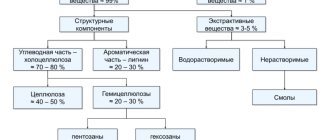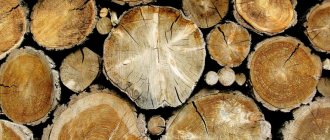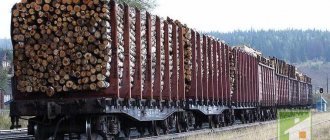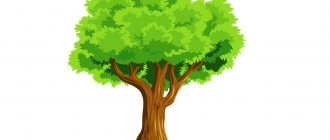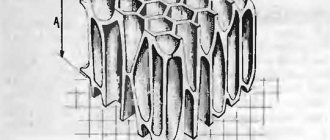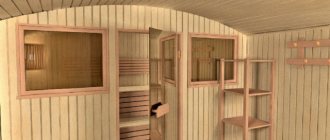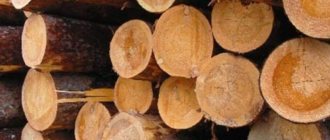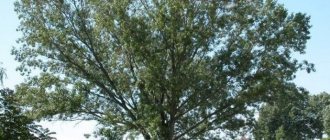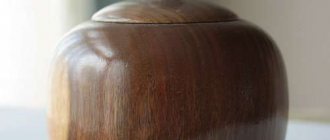The deciduous ash tree has at least 70 species. Of these, only 4 grow in Russia. The climate of the Northern Hemisphere is suitable for ash. Its wood is very valuable and resembles oak. In the old days, ash was used to make weapons: clubs, bows, arrows. Now it is used in mechanical engineering, as well as in the creation of aircraft and in the production of furniture, and here it is valued on a par with mahogany.
Types of ash
Almost all seven dozen species of ash are used by humans. This tree, by the way, grows even in North Africa. And on any continent it belongs to the category of expensive, sometimes even elite.
The picture shows an ash tree, its leaves and fruits
Ordinary
This tree very rarely reaches a height of forty meters, more often it is no higher than thirty meters. A young common ash tree has a grey-green bark, while an adult tree has dark gray bark with cracks. Each leaf has up to 15 leaflets. The common ash tree has fruits. They ripen in August, but can hang on the tree until spring.
Photo of a common ash tree
Chinese
This tree is long-lived and can grow up to 100 years. Its homeland is China, but this type of ash is found in North America, Asia, Ukraine, the North Caucasus, and also in the south of Russia. The tree does not belong to the category of giants. Its maximum height rarely exceeds 30 meters. Its bark is smooth and dark gray in color. After touching the leaves (they are palm-shaped and can grow up to 60 centimeters), they emit an unpleasant odor.
Photo of Chinese ash
Manchurian
The homeland of this species is Manchuria. The tree also grows in Northern China, Korea, Japan, the Khabarovsk Territory of Russia, Sakhalin and the Amur Region. The bark of an adult Manchurian ash is light gray in cracks. The crown is openwork. The tree gains color in May. Its fruits are narrow lionfish. The leaves are unpaired, each with 7 to 15 leaflets. The second name of this species, which is most common in Russia, is Far Eastern ash.
Photo of Manchurian ash
Fluffy
This tree is the shortest of all ash varieties, its height is no more than 20 meters. Its crown is openwork, spreading, and its shoots are felt-like. Hence the name - fluffy ash. It can even grow where the soil is thoroughly flooded. The second name for downy ash is Pennsylvanian.
Most often this species grows in North America. It is absolutely unpretentious to the soil, so it grows along rivers or even in flooded openings. The leaves of the tree consist of 5-9 leaflets. Belongs to the category of frost-resistant trees.
Photo of a fluffy ash tree
Description of design
Unlike earlier boats, Project 885 has a one and a half hull design. In practice, the role of a light hull is performed by the fairings of the bow and stern, as well as the fencing of the conning tower and superstructure. Inside, the case is divided into a number of compartments. Changes have been made to the placement of weapons.
The classic layout of submarines involves placing torpedo weapons in the bow compartment of the submarine, and missile weapons are usually located behind the wheelhouse. In the nuclear submarine of the Yasen project, the torpedo armament is located on the side, in the middle part of the hull.
The torpedo tubes are placed at an angle to the central plane of the boat. The missile launch silos of the Onyx complex are also located there behind the retractable device fence.
The propellant of the APKr is a 200 MW water-cooled nuclear reactor. Housed in a durable housing, it transmits steam to generators, which in turn generate current for the propulsion motors.
In turn, the electric motors rotate multi-bladed propellers, ensuring the boat moves underwater at speeds of up to 31 knots. In addition, electric generators provide electricity to all submarine equipment.
The Project 885 Yasen submarine is a new word in the history of submarines.
Due to its versatility and to reduce production costs, an unconventional layout was adopted. To ensure stealth under water, the surface of the hull and deckhouse is covered under a noise-absorbing rubber-like coating.
The boat is equipped with the most modern means of search and communication.
Features in the characteristics of the Project 885 nuclear submarine:
- one and a half boat hull;
- location of weapons compartments;
- placement of control and tracking equipment in the bow compartments;
- reduced noise;
- a wide range of missile and torpedo weapons.
To rescue the crew, a spherical lifting rescue capsule is installed in the wheelhouse fencing.
It can accommodate the entire crew of the submarine. A similar device was used during the rescue from the Komsomolets nuclear submarine in 1989. But in this case, all the errors of the previous project were taken into account and corrected.
Physical properties
The physical indicators of ash are quite high. This classifies wood as durable and easy to work with. Expensive furniture and high-quality parquet are made from ash.
Strength
The tensile strength measured in tension along all fibers of any type of wood is on average 1300 kgf/cm2. But the strength of wood across the grain can be only 1/20 of the tensile strength along the grain. And this figure is 65 kgf/cm2.
There is another parameter - compressive strength. It also comes in two types - along and across the fibers. With increased compression along the fibers, the dimensions of the wood become shorter. The strength indicator is at least 500 kgf/cm2.
But when compressed across the fibers, the wood becomes denser and its height decreases. After the mold is destroyed, its side parts peel off. This indicator for ash wood ranges from 90 to 99 kgf/cm2.
Thermal conductivity
Ash that has undergone heat treatment has the following thermal conductivity index - 0.18 Kcal/mxhx °C. It is 20% lower than that of untreated wood. Quite low thermal conductivity combined with high density allows us to speak of ash wood as a tree that can retain heat. Wood is suitable for creating warm floors.
Density
There is no average density for ash. Late wood has a density three times higher than early wood. Its level is also affected by the humidity of the tree. The optimal density of ash, whose moisture content is 12%, is measured from 680 kg/m3, and the maximum value is 750 kg/m3. This wood is a high density species.
Elastic modulus
The modulus of elasticity of type 1 ash wood under tension or compression along the fibers is practically the same. In ash, the ratio of these two indicators is 0.9. But the tensile modulus of elasticity will be different.
This indicator is from 7 to 14 times less for ash when stretched across the grain than along it. And with radial stretching it is 1.5 times higher than with tangential stretching. The model of elasticity during torsion of the second kind in ash is 16 times less than the modulus of elasticity of the first.
Natural humidity
The ratio of the mass of moisture contained in a specified volume of wood to the mass of the same but absolutely dry volume is called absolute humidity. When the drying process occurs (natural or artificial), the moisture from the cell membranes evaporates and the wood becomes dried out or dry.
Moisture absorption in ash is much lower than, say, in coniferous trees. This is due to its high density. Thus, a freshly felled common ash tree has a moisture content of 36%. But for Manchurian ash, the humidity reaches 78%. When dried, cracks may form on this wood. Although it is believed that when using drying and processing technology, ash is excellent for parquet production.
Hygroscopicity
Ash does not absorb external moisture too actively. But in a humid environment, its saturation point can cause some change in volume. That is why dense and hard ash is not suitable for interior cladding of saunas and baths.
Weight
Pure wood cellulose, the amount of water and the anatomical structure of the tree affect the specific gravity of the wood. For common ash, these parameters may vary depending on how dry the wood is.
Specific gravity indicators
| specific gravity of freshly cut ash | specific gravity of air-dried ash |
| average 0.92 | average 0.75 |
| limit 0.74-1.14 | limit 0.57-0.94 |
These indicators allow us to classify ash as a first class of very heavy wood.
Hardness and strength
The density of ash wood at a humidity of 12% reaches 700 kg/m3.
The hardness of ash is as follows:
- end - 78.3 N/mm2;
- radial - 57.1 N/mm2;
- tangential - 65.1 N/mm2.
Wood is classified as durable, hard and heavy. Three-dimensional sculptural compositions can be made from it.
Color and texture
Despite its density, ash wood is elastic and viscous. Due to its strength, it is easy to process, even after drying it has an interesting texture. The heartwood of ash wood is light brown, and the sapwood is pink or yellow. Bright fibers are visible on the cut, which makes ash similar to oak.
Ash is used in the production of parquet. One of the GOSTs, which determines how a floor covering product should be painted, is GOST 8832.
Burning ash wood
The wood that burns best is wood that is not only dry, but also dense and heavy in physical parameters. When heated to 105°C, the process of evaporation of water will occur. And at 150°C, the release of gaseous products begins. Heat will be released at temperatures above 270°C.
Wood, including ash, can fully ignite at temperatures from 450 to 620°C. When the temperature rises significantly, oxygen is released from the wood, which helps form charcoal and ash. Ash has the highest heat productivity, its indicator is 87%. It is achieved at a maximum temperature of 1,044°C.
Ash content
Hardwoods produce large amounts of ash. It is considered to be an invaluable organic fertilizer. Thus, the ash of ash wood contains a record amount of potassium, and its content is higher the younger the tree is.
Moreover, according to GOST 3243-88, firewood for combustion and ash formation is divided into three groups. The first includes ash, as a tree with a high calorific value. Considering that this wood has excellent physical and chemical properties, it is unprofitable to use it to fire stoves. Moreover, after processing, the value of ash wood only increases.
Sports equipment
On an industrial scale, sports equipment and elements of sports equipment are made from ash:
- rackets,
- skis,
- crossbows,
- hockey sticks,
- baseball bats,
- oars,
- bars,
- billiard cues.
It is also often used to make safe wooden parts for children's playgrounds. Not only are they durable enough to regularly withstand hours of vigorous play, but they are also resistant to cracking and splintering, minimizing the risk of splinters or scratches.
Heat-treated ash
At high temperatures, ash wood completely loses hemicelluloses. This eliminates the very possibility of the occurrence of fungi and the proliferation of microorganisms. Heat treatment of ash significantly changes its molecular composition. The wood becomes protected from deformation when humidity changes.
Heat-treated ash has a pronounced texture. The color of the wood is uniform from light beige to dark brown. Recently, such wood has begun to be used for external construction, in particular for cladding terraces.
The undeniable advantages of heat-treated ash include:
- environmental cleanliness;
- beauty of the product;
- its durability.
The only downside is the fact that already expensive wood becomes even more expensive.
Photo of heat-treated ash
Edged
Mostly edged ash is used in construction. Such boards can be used for laying on the floor, as well as for cladding walls. Wood of standard moisture content can be grades 1, 2 and 3. The cost of 1m3 of first-class ash wood is from 18,000 rubles. But for this money you can get a high-quality floor or beautiful walls. All this can last for decades.
In general, ash wood has unique characteristics, which makes it possible to use it in exclusive construction, as well as in the creation of luxury furniture. Moreover, such a clearly expensive acquisition is capable of performing its functions for a very long time.
Photo of edged ash
Rules of care
In order for the product not to lose its functionality and attractiveness, it is necessary to select items only from high-quality solid ash. When using poorly dried material in production, traces of wormholes or low uniformity of fibers may be noticeable on the walls of furniture. You can extend the service life of solid ash products by installing it away from heating appliances. Sudden changes in temperature and humidity levels negatively affect ash; furniture may lose its attractive appearance.
Wood is highly resistant to impacts, but sometimes scratches and chips still appear on the surface of wooden furniture. Damaged areas should be sanded with fine-grit sandpaper and covered with a fresh coat of varnish. To eliminate minor defects, use a wax pencil.
To cleanse furniture from dirt, treat it with a soft, damp sponge. After which the products are wiped dry. If there are greasy stains on the countertop, cabinet or chest of drawers, but you need to spray a furniture cleaner onto the contaminated area. To create a cozy and harmonious interior, furniture made from solid ash is used. The high aesthetic appeal and service life of the products fully justifies their cost.
